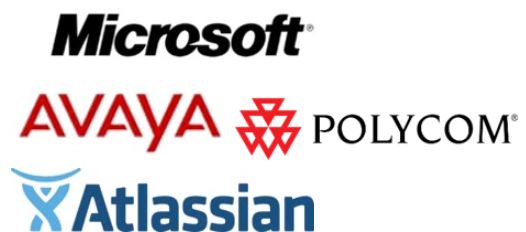
本文来自作者
沈灏(Steve)
在
GitChat
上分享 「世界 IT 公司 20 强企业的敏捷转型实例」,
「
阅读原文
」
查看交流实录。
「
文末高能
」
编辑 | 哈比
敏捷转型案例—某数据通信巨头
我将分下面的几部分来分享这个案例:
-
案例的背景;
-
大略的转型成果;
-
大致的演进历程;
-
四个主要阶段的得失;
-
管理和工程实践的总结;
-
转型可继续改进处;
-
个人小结。
案例的背景
-
IT communication products
, 50% + Global Mkt share, Revenue = 2B US$/Yr
-
Market competition is high

-
Nearly 5 Years
of this transformation
-
People
-
Cross continental PDCA
-
About 170 people to be transformed into 14 scrum teams in China
-
Functional org-chart: Arch, Dev, SysTest, Alpha/Beta, HW, Sustaining, etc
-
Quality
is the 1st priority on delivery
-
Traditional Q-Gate
review waterfall process
大略的转型成果
-
Productivity
(1/4 increase at least, 25%+ features delivery capability)
-
Quality
1/3 less bugs in Final Regression, bug # on field less than earlier release. Note, this company has an industry wide fame for its STRONG quality)
-
Regression phase 50% cut
(7 wks to less than 3 wks, more time for feature dev)
-
Shorter Release Cadence
(from 12 to 3 months)
-
Portfolio
: Biz value (IRR-ROI) based team # allocation
-
Feature
: Priority by Kano, and then Karl Wieger, when needed
-
Agile Release Train


-
Rolling wave
release backlog adjustment before the final release
-
X-teams demo
, there are team & sys level US/feature demo and feedback. If it’s not too late as in regression phase, rolling wave planning is still possible
-
Priority Method
:
-
New Org-Chart

大致的演进历程
-
阶段〇
:we tried
mini-waterfall
(phased delivery), cutting the whole release timeline into 3 parts, each 3-4 months
-
阶段一
:
Agile basics
, Scrum framework & basic practices
-
阶段二
:
Solidify basics
with focus on US DoR and Delivery DoD
-
阶段三
:
Single backlog
&
X-team PDCA
processes
-
阶段四
:
Ops review
&
Maturity
on X-releases

敏捷实践的 4 个主要阶段
阶段一

阶段二
-
Solidify Basic Practices,
focus on DoR/DoD, and intro XP engineering practices (ATDD & CI & automation enhancement), ~1 year
-
Good parts:
-
CI
with CB/ UT/ Coverage/ StaticAnalysis/ BuildSanity/ Daily Regression
-
100% new feature
automated when applicable
-
Main branch development
with Git/Gerrit
-
DoD
at US level, e.g. UT/critical bug#/X-US test/just enough Doc/ etc
-
Smaller
sprint end delivery
increments
-
Better
in-sprint quality
with ATDD
-
Grooming
mtg is 1 wk before Sprint Planning, and US are vertical slices mostly
-
UX
to be 1 sprint DoR-ed in advance
-
DoR
checklist is in place, e.g. Assumption /ScopeNotIn /Dependencies /Scenario
-
2-E2E-feature team
for a release run in scrum,
grasp the basics
-
Better cadence & predictability
-
Better Productivity
-
CoP
along with team self-learning help building up agile capability
-
Lead by example
PO/SM-PgM &
dedicated
teams on the release
-
Lessons Learned:
-
Smaller req in US
becomes demanding for PO/Team
-
Delivery cadence is still unstable
, as we still have carry-overs
-
ATDD needs
more investment on automation and CI
-
Managers’ role in Agile is to be further explored
, instead of just command & control or fully hands-off to the other extreme
-
Project scrum team members are
dismissed
back into functional team after release
阶段三
阶段四
管理实践的改进
-
From team, to X-teams (Rel), and then X-releases (Portfolio)
-
Fixed
Rel cadence
with corresponding ceremonies for most product lines (~3 months) with visibility and predictability, namely, Quarterly est/plan (
portfolio
), Release planning (
product-line
), weekly PdM/PO sync-up (
X-rels
), PO of PO for Sprint+1 US candidates (
rel
), Site level grooming,
team
level grooming.
-
Almost permanent
FEATURE
teams for all product lines, could be adjusted to other release when needed.
Career bath
for new roles.
Self-org is really doable
, at least to the level of mastering individual team process/progress
-
Rally and other tools
integration and customization are done progressively
-
Agile US Level Management
-
Using
US mapping
alike practices to have a big picture for X-teams based release level planning. US mapping used for multiple releases and also multiple sprints for a release
-
US conveyed in 3W/ADS/AC (Given/When/Then), so
US can split via AC
-
Bug situation and Test cases associated with US, supported by customized tools
-
Agile CoP for roles and technologies to let agile activists get more engaged
-
Top-down
empowerment
via
governance & maturity
-
Mgrs to
remove
escalated obstacles, no C&C
style
on teams
-
Ops review
on Rel health in an Agile way (Rel obstacles /risks /DoR /Velocity /Quality /RCA for bugs, etc)
-
Maturity assessment

工程实践的改进
-
ATDD
is in use but not always test scripts in advance
-
Main branch Dev for multiple product lines and CI
for regular build, daily regression, weekly regression
-
Local CI
for private build, new US/feature, and regression sanity check
-
Peer and Expert
code review
(Gerrit +1/+2)
-
Pair programming
really improves quality and productivity (Dev&Test, SM&Test)
-
Code refactoring
on demand can improve arch when needed, helps maintainability and testability
-
Auto build deployment
improves quick feedback and saves time
-
Automation cases rate
for regression over 60%, for new features over 90%
转型可继续改进处
-
Transformation could be more iterative and incremental with targeting benefits
-
Strategic people and execution staff could be more interactive in feedback process, with better transparency and alignment
-
It will be much helpful if involving more agile activists into the whole agile transformation (more bottom-up)
-
Sense of urgency and coaching could be improved for less pain/chaos/waste on people’s cognitive and emotional learning curve















